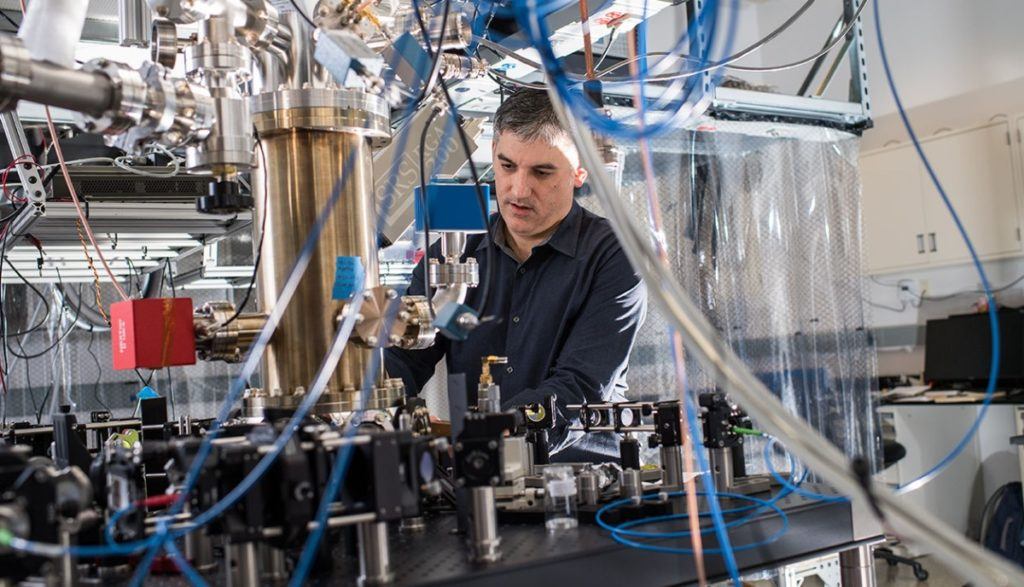In the ever-evolving landscape of computational technology, quantum computing stands out as a transformative paradigm poised to revolutionize diverse fields including cryptography, drug discovery, and materials science itself. Central to the advancement of quantum computing is the pivotal role that material science plays in facilitating the development and performance of quantum systems. This article delves into the multifaceted relationship between material science and quantum computing, unveiling the critical materials, their quantum properties, and the implications for future technologies.
1. The Importance of Quantum Coherence
At the heart of quantum computing lies the principle of quantum coherence, which refers to the ability of quantum bits (qubits) to maintain their quantum state. Material science plays a crucial role in ensuring that qubits remain coherent long enough to perform calculations. Materials with low levels of intrinsic noise and high purity are essential for enhancing coherence times. For instance, solid-state qubits such as those made from silicon or superconducting materials showcase varying coherence times. Researchers are rigorously studying different materials and their atomic structures to better understand how they contribute to or detract from coherence, which directly impacts qubit fidelity and performance.
2. Superconductors: A Paradigm of Innovation
Superconducting qubits are among the most promising contenders in the field of quantum computing. These qubits utilize materials that exhibit zero electrical resistance below a certain temperature, enabling them to conduct electricity without energy loss. The design and optimization of superconducting materials, such as niobium-based alloys, are pivotal in creating stable qubit architectures. Advances in material science have led to the discovery of new superconducting compounds, which can operate at higher temperatures, thus lowering the operational costs associated with qubit design.
3. Topological Insulators and Quantum Stability
Topological insulators, a class of materials characterized by insulating bulk properties and conductive surface states, present a unique approach to quantum computing. These materials are inherently resistant to certain types of disturbances, making them suitable candidates for hosting qubits with increased stability. The search for materials that exhibit non-trivial topological properties involves an interdisciplinary effort, merging condensed matter physics with material science. The potential to develop qubits that are less susceptible to decoherence enhances the feasibility of building a reliable quantum computer, paving the way for scalable quantum networks.
4. Quantum Dots: Nanotechnology Meets Computation
Quantum dots, nanoscale semiconductor particles, offer yet another avenue for qubit implementation. These nanostructures have quantized energy levels, allowing for precise control of their quantum states. The fabrication of quantum dots requires sophisticated material science techniques to control size, shape, and composition, significantly influencing their electronic properties. By engineering the surface chemistry and geometry of quantum dots, scientists can tailor their interactions with light and other qubits, enhancing performance opportunities while reducing error rates. This highlights the intersection of nanotechnology and quantum computing, showcasing how advances in material science can propel the development of functional quantum devices.
5. Cryogenic Materials: Enabling Quantum Operation
To realize practical quantum computers, the operational environment must be appropriately managed. Most current quantum computing systems operate at cryogenic temperatures to minimize thermal noise and facilitate qubit stability. This necessitates the development of advanced materials capable of withstanding extreme conditions while maintaining performance integrity. Understanding the thermal and mechanical properties of different materials at low temperatures is essential for creating the infrastructures necessary for quantum operations. The rapidly advancing field of material science contributes significantly to identifying suitable materials for cryogenic environments, ultimately impacting design choices in quantum hardware.
6. Integration with Classical Systems
As quantum computing progresses, the need for seamless integration with classical computing systems becomes increasingly paramount. Material science plays a critical role in developing hybrid systems that allow classical computers to interface effectively with quantum processors. Novel materials, including those designed for photonic integration, are being explored to facilitate efficient data transfer across quantum and classical architectures. The synergy between classical and quantum systems will likely dictate the usability and applicability of quantum computing in real-world scenarios, making material composition an essential consideration for future designs.
7. Sustainability and Ethics in Material Selection
As the demand for new materials increases, the sustainability of sourcing and production becomes a pertinent concern. Researchers in material science are now advocating for the design of environmentally friendly materials and the recycling of resources used in quantum computing. This transition towards sustainable practices not only aligns with global ethical standards but also asserts the importance of developing materials that mitigate environmental impacts while maintaining high performance. The consideration of sustainability aspects will shape the future landscape of quantum computing materials.
8. The Road Ahead: Material Innovations
The future of quantum computing hinges upon continued breakthroughs in material science. As researchers explore new materials and refine existing ones, it will be imperative to maintain a collaborative approach across disciplines, enabling the integration of insights from physics, chemistry, and engineering. The ongoing pursuit of materials that demonstrate superior quantum properties will accelerate the development of robust quantum systems capable of executing complex computations with unprecedented efficiency.
In conclusion, the interplay between material science and quantum computing is undeniable. As advancements in material development progress, the potential of quantum computing will be realized, ushering in a new era of technology that transcends current computational capabilities. Prioritizing research in innovative materials will undoubtedly foster a deeper understanding of quantum phenomena, ultimately propelling society towards groundbreaking discoveries across multiple domains.












